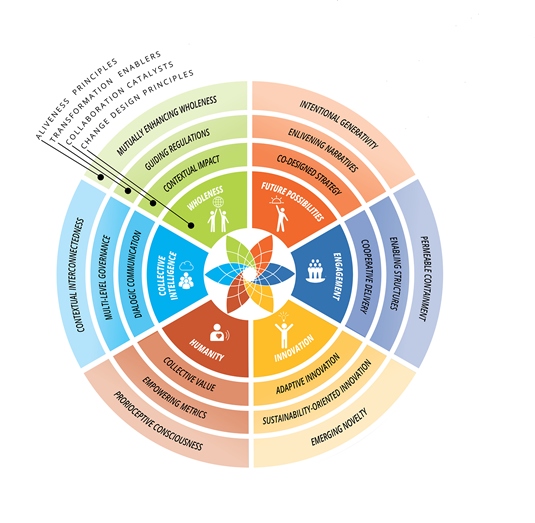The Global Goals require recognition of the complex interplay between systemic interventions for the different goals – as well as between the actors and networks they touch. Seeing the 17 goals not only as a technical and political implementation challenge, but also as an invitation to operate with a systems view of life, in a spirit of collective leadership, may advance new thinking and subsequently new practice – that could then become the unstated norm.
There is a need to translate a systemic and patterned approach into the linear mode of operations of most current institutions that deal with climate change adaptations and SDG implementation. Such ‘translation work’ is important, as currently the more linear structures and operational logics of the public sector, the corporate world, civil society and international organizations, do not match with the non-linear, systemic premises is actually required for sustainability transformations. The question arises which approaches, models, tools and instruments can facilitate and ease the attention to and the enactment of systems aliveness in a world of linear planning and implementation where very few theories, approaches, tools, methodologies, and frameworks enable actors to look at the dysfunctional patterns of interaction that lie behind complex systemic challenges.
However, there are already attempts under way of approaches and methodologies that invigorate the six principles, implicitly or explicitly. They range from shifting organizational structures to collaborative innovation designs, and from stakeholder governance systems to leadership approaches built on integrating systemic approaches. A good place to start would be investigating the increasingly emerging phenomenon of multi-stakeholder partnerships and collaboration, because in their complexity cross-sector and multi-actor settings are already an attempt to address complexity with a complex approach. They pay tribute to the interdependence of implementation issues.
One tested approach to leading transformative change in such multi-actor settings is the Collective Leadership Compass. As a meta-level and principle-based guiding structure the Compass is an example of a transformative change methodology that focuses on collaborative human agency for transformative change. While invigorating human competency dimensions, the compass guides collective sense-making and collective co-creation in multi-stakeholder collaboration. Hence, it builds the capacity of a group of actors to change their structure of attention and subsequently their collective pattern of thought and action. The patterns approach is translated into the world of planning as designing change in the six dimensions of future possibilities, engagement, innovation, humanity, collective intelligence, and wholeness. This helps leaders diagnose and plan systemic and transformative change. It enables them to steward systems aliveness. The six human competency dimensions are at the centre of transformative change, because it is human agency that will take us into different future. They function as design principles for transformative change designs. The Architecture for Stewarding Sustainability Transformations helps to translate these dimensions into collaboration catalysts for multi-stakeholder partnerships such as co-designed strategy, cooperative delivery, adaptive innovation, dialogic communication, collective value and contextual impact. It also guides change agents and decision-makers in designing large-scale interventions (such as energy transitions, introduction of circular economy strategies or climate change adaptations) in accordance with the best possible strategies to balance systems aliveness. The Transformation Architecture functions as a roadmap to a new structure of attention – on the individual level, the level of organizations, in multi-stakeholder partnerships or in large transformation systems with multiple interventions.

